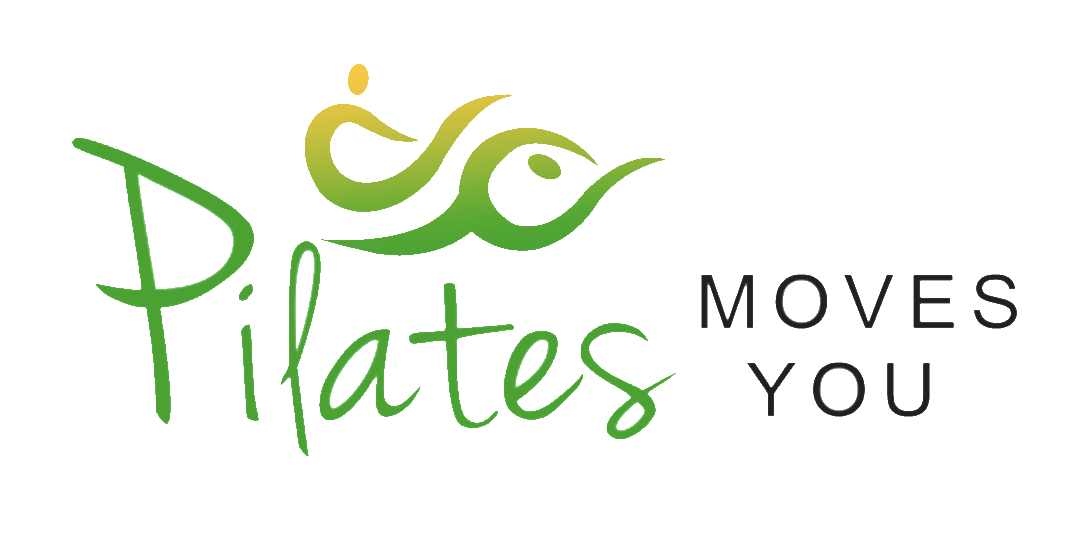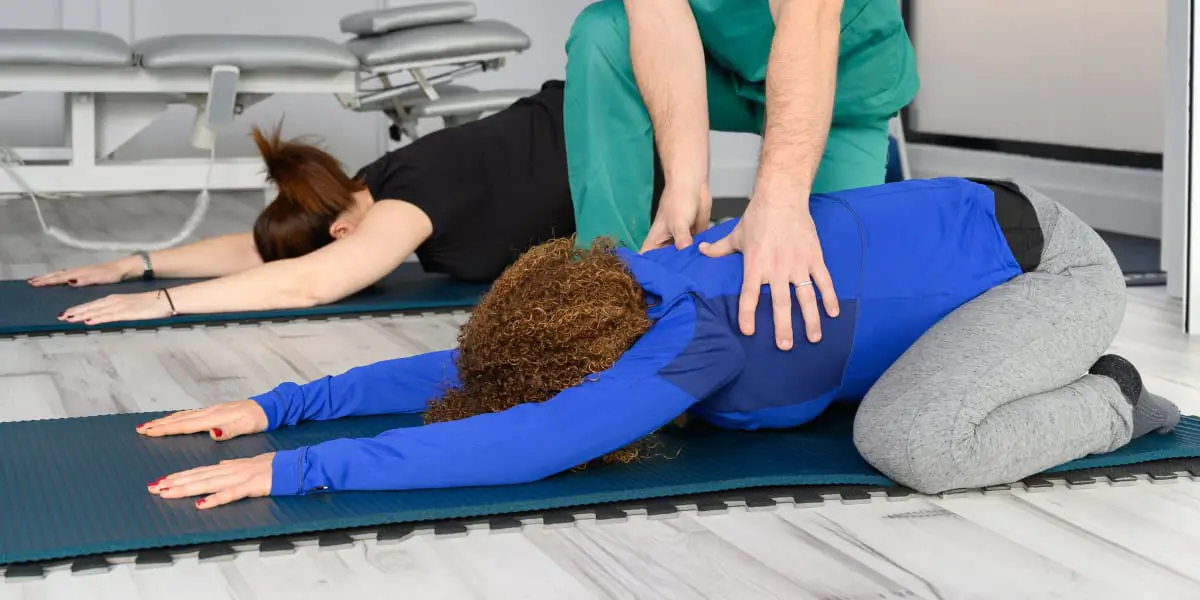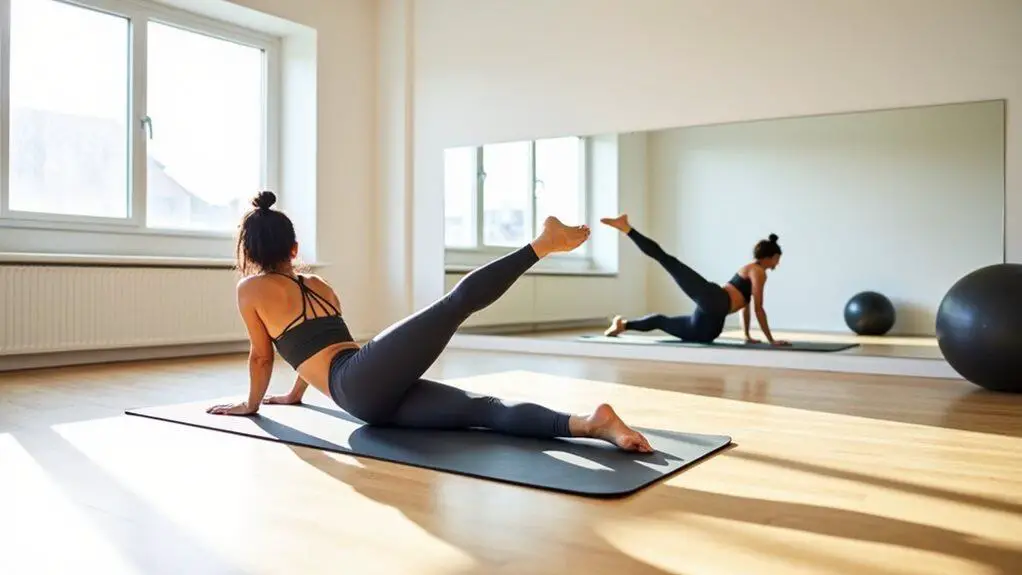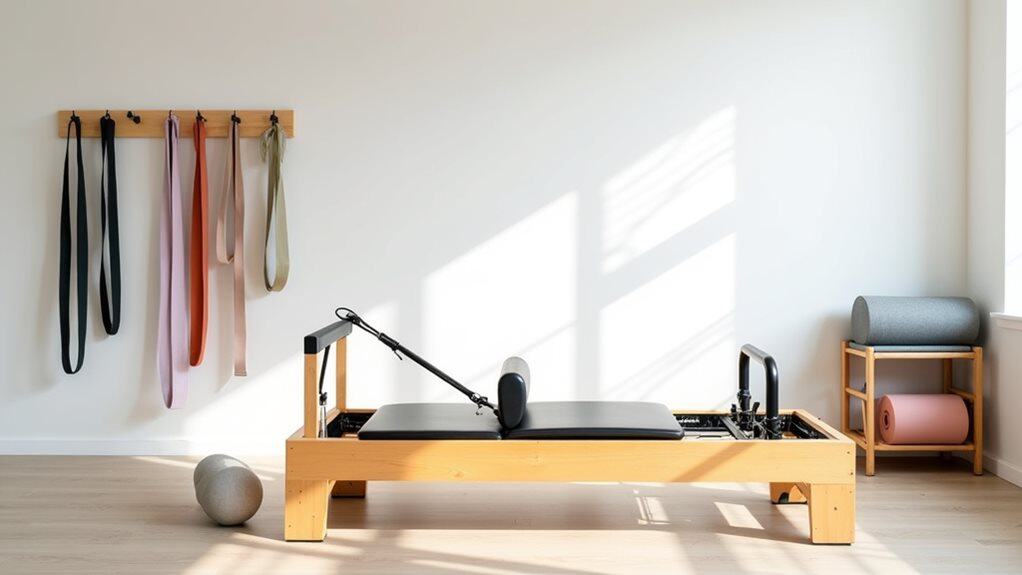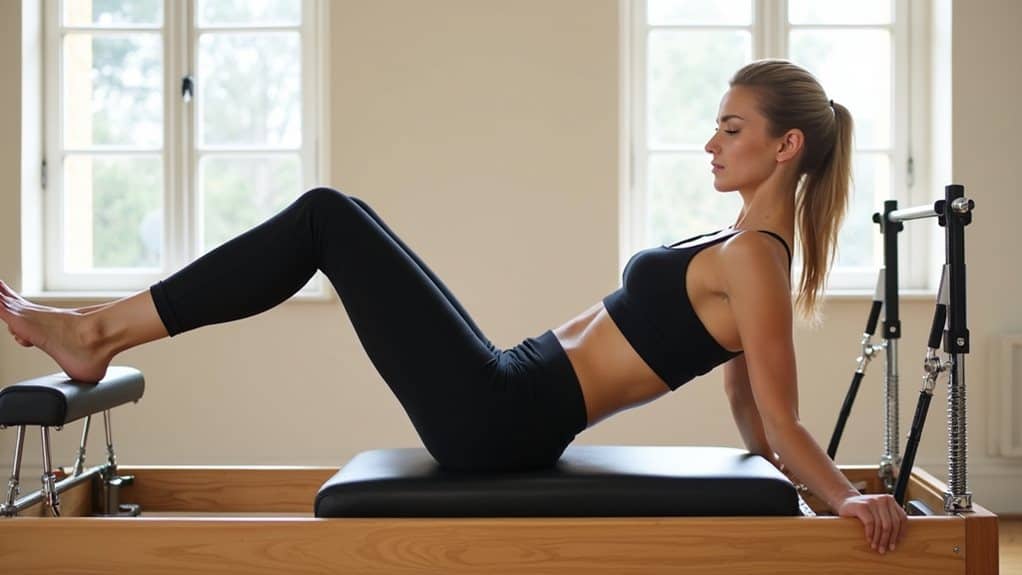Are you looking to recover from an injury, rebuild your strength after surgery, or revive your active lifestyle? Pilates for rehabilitation may be just what you need.
With its focus on core stability, balance, and flexibility, Pilates can help you unleash your full potential and achieve your goals.
As an effective form of physical therapy, Pilates is ideal for those who want to improve their overall health and well-being without straining their bodies.
Whether you’re a beginner or an experienced athlete, with the right guidance and equipment, you can use Pilates to rehabilitate your body and mind in a safe and supportive environment.
So why not give it a try? By incorporating Pilates into your lifestyle today, you can start moving towards the freedom of a healthier tomorrow.
Understanding the Principles of Pilates
As you learn about the principles of Pilates, it’s like discovering the hidden mechanics behind a well-oiled machine. You begin to understand how each movement is carefully crafted to balance and strengthen your entire body. The benefits of Pilates are unparalleled as it not only targets your physical body but also enhances your mental wellbeing.
One of the key techniques in Pilates is precision. Every movement should be executed with intention and awareness, allowing you to connect with your body on a deeper level. As you focus on alignment and proper form, you activate muscles that may have been dormant for years.
This results in improved posture, increased flexibility and mobility, and reduced risk of injury. With these principles in mind, you can unlock the full potential of your body through Pilates for injury rehabilitation or any other fitness goals you may have.
Pilates for Injury Rehabilitation
Using Pilates as a form of physical therapy can significantly improve recovery time and overall mobility after an injury. It’s like adding oil to a squeaky door hinge to allow for smoother movement.
Pilates exercises focus on building strength, flexibility, and control through controlled movements that target specific muscle groups. By doing so, it helps alleviate chronic pain caused by injuries or conditions such as arthritis while improving overall posture.
Moreover, Pilates is also beneficial for aging bodies. As we age, our muscles become weaker and tighter, leading to decreased mobility and increased risk of falls. Pilates exercises can help maintain bone density and balance while strengthening the core muscles that support the spine.
With regular practice, it can help reduce the risk of injury due to falls while improving overall quality of life. This makes Pilates an excellent option for individuals seeking rehabilitation after an injury or those looking to maintain their health as they age.
As you recover from your injury or surgery using Pilates exercises, you’ll begin to notice improved flexibility and reduced pain levels. The controlled movements aim to restore functionality in affected areas by targeting specific muscle groups with low-impact exercises.
In the next section about ‘pilates for post-surgery rehabilitation,’ you’ll learn how these same principles apply in helping individuals recover after surgical procedures.
Pilates for Post-Surgery Rehabilitation
If you’ve recently undergone a surgical procedure, incorporating Pilates into your rehabilitation plan can help improve your overall mobility and range of motion. However, before starting any exercise program, it’s important to consult with your healthcare provider and get their approval. They may give you specific precautions to follow based on the type of surgery you had and your individual recovery process.
Once you have the green light, consistent Pilates practice can offer many benefits for post-surgery rehabilitation. Here are some reasons why:
- Pilates emphasizes controlled movements that can help increase strength without risking further injury.
- It promotes proper alignment and posture, which is crucial during the healing process.
- The focus on breathing techniques can aid in relaxation and reduce stress levels that often come with recovering from surgery.
- Pilates exercises are low impact, making it a gentle yet effective option for those in recovery.
- Regular practice can lead to improved flexibility and balance.
By incorporating Pilates into your post-surgery rehab plan, you’re taking an active role in your own recovery journey. As you continue to progress towards full mobility and function, consider how this same approach could benefit athletes or other active individuals who want to enhance their performance.
Pilates for Athletes and Active Individuals
For athletes and active individuals, incorporating Pilates into their fitness routine can lead to a 27% reduction in the risk of injury. This is because Pilates focuses on building core strength, improving flexibility and balance, which are all key elements in injury prevention for athletes.
Moreover, Pilates also helps improve athletic performance by enhancing muscle control and coordination. Pilates for injury prevention involves exercises that target specific muscle groups such as the glutes, hamstrings, quadriceps and lower back. These exercises help strengthen these areas which are commonly prone to injuries during physical activities.
Additionally, Pilates for improved athletic performance involves exercises that focus on stability and balance training to enhance overall body control during movement. By incorporating Pilates into your fitness routine, you not only reduce the risk of injuries but also improve your overall athletic performance.
As you delve further into your journey with Pilates, it’s important to start from scratch if you’re new to this form of exercise. In the next section about ‘Pilates for Beginners,’ we’ll explore some simple yet effective exercises that’ll help you build a strong foundation in your practice while still working towards your goals of injury prevention and improved athletic performance.
Pilates for Beginners
Are you new to Pilates? Don’t worry, everyone has to start somewhere!
Building a strong foundation is key, so take it slow and gradually work your way up. It’s normal to feel some fear and anxiety when trying something new, but don’t let that hold you back.
With patience and practice, you’ll soon be on your way to a stronger body and mind through the power of Pilates.
Building a Strong Foundation
You can strengthen your body from the inside out by focusing on building a solid foundation with proper alignment and core engagement. Building strength isn’t just about lifting heavy weights or doing high-intensity exercises; it’s also about developing a strong base to support your movements and prevent injuries.
Here are three key points to keep in mind as you work on building a strong foundation:
Proper Alignment: When your body is aligned correctly, you reduce stress on your joints and muscles, allowing for more efficient movement patterns. Pay attention to how you stand, sit, and move throughout the day.
Core Engagement: Your core muscles are responsible for stabilizing your spine and pelvis during movement. By engaging them properly, you create a stable base of support for all types of activities.
Breathing: Deep diaphragmatic breathing helps activate the deep core muscles that support spinal stability. Focus on inhaling deeply through the nose into the belly and exhaling fully through pursed lips.
By incorporating these principles into your Pilates practice, you’ll develop a stronger foundation that allows for greater freedom of movement with less risk of injury. As you continue to build strength and improve alignment, remember to start slowly and gradually increase intensity over time.
Starting Slowly and Gradually
Before you jump into high-intensity Pilates workouts, it’s important to start slowly and gradually increase your intensity over time. Remember that slow progress is still progress, and with patience and consistency, you’ll see results.
Pilates focuses on controlled movements and proper alignment, so take the time to learn the correct form before advancing to more challenging exercises. Starting with beginner-level classes or private sessions can provide a solid foundation for building strength and flexibility.
Don’t be discouraged if you feel like you’re not progressing as quickly as you’d like – everyone starts somewhere. Just stay committed to your practice and trust in the process. By starting slowly, you’ll be able to avoid injury and build a strong foundation for more advanced movements down the line.
As you begin your Pilates journey, it’s common to experience fear or anxiety about trying something new or challenging yourself physically. However, by taking things at a manageable pace and celebrating small victories along the way, you can overcome these feelings of apprehension.
With each session, remind yourself of why you started this journey in the first place – perhaps it was to alleviate pain or improve overall health – and let that motivate you towards reaching your goals.
Overcoming Fear and Anxiety
Once you’ve started your Pilates journey, it’s normal to feel a little nervous or apprehensive about pushing yourself out of your comfort zone. But don’t worry – with time and patience, you can overcome any fears or anxieties and achieve your goals.
Overcoming fear and anxiety is an essential part of the rehabilitation process, as it allows you to take control of your body and mind. Pilates offers numerous mental health benefits that can help you manage stress, anxiety, and depression. By focusing on your breath and movements during each session, you’ll learn how to relax your mind while strengthening your body.
As a result, you’ll feel more balanced, energized, and confident in everything you do. So if fear or anxiety is holding you back from reaching your full potential with Pilates for rehabilitation, remember that there are many tools at your disposal to help you overcome those obstacles.
By incorporating Pilates equipment and props into your routine, you can enhance the effectiveness of each exercise while keeping things interesting and challenging. So let’s dive into some of the most popular pieces of equipment used in Pilates for rehabilitation – from resistance bands and balls to reformers and chairs – and explore how they can help unlock even more potential within yourself!
Pilates Equipment and Props
Get ready to elevate your Pilates practice with the use of equipment and props, allowing you to challenge yourself in new ways and experience a deeper connection to your body.
Pilates equipment for home, such as reformers, chairs, and barrels, can enhance your workouts by providing resistance and support. These tools allow for more targeted exercises that focus on specific muscle groups while minimizing strain on the joints.
Adding Pilates props like balls, bands, and blocks can also increase the intensity of your workout by adding an extra challenge.
Incorporating these tools into your routine not only adds variety but also helps prevent boredom from doing the same exercises repeatedly. It allows you to explore different movements that target areas of weakness or imbalance in your body.
With time and practice, you will notice improvements in strength, flexibility, balance, and overall physical well-being.
Explore these options at home or find a studio with Pilates equipment available for use during classes or private sessions. Finding what works best for you is key to achieving success in rebuilding your body after injury or illness – which brings us to our next section about finding the right Pilates instructor!
Finding the Right Pilates Instructor
Looking for the perfect Pilates instructor to guide you on your fitness journey? You’ve come to the right place! Choosing the right studio and instructor can make all the difference in your experience with Pilates.
Here are some tips to help you find the best match:
- Do your research: Look up different studios in your area and read reviews from other clients. This will give you an idea of what each studio offers and what their teaching philosophy is.
- Take a trial class: Most studios offer a free or discounted trial class for new clients. This is a great opportunity to try out different instructors and see who resonates with you.
- Consider private sessions: While group classes are great, private sessions can be even more beneficial as they allow for individualized attention and personalized workouts.
- Trust your gut: Ultimately, it’s important to listen to your intuition when choosing an instructor. You want someone who makes you feel comfortable, supported, and challenged.
When you’ve found the right instructor and studio, incorporating Pilates into your lifestyle becomes easier than ever before!
Incorporating Pilates into Your Lifestyle
So, you’re ready to incorporate Pilates into your lifestyle? Great choice!
Setting realistic goals is key to making progress and staying motivated. Finding motivation and accountability can also help keep you on track with your Pilates practice, whether it’s through a supportive friend or tracking your progress in a journal.
Finally, making Pilates a part of your daily routine can help ensure that you prioritize your health and wellness every day.
Let’s dive in and explore how you can make Pilates work for you!
Setting Realistic Goals
Let’s talk about establishing achievable targets to make progress towards successful recovery and growth. Realistic goal setting is crucial when it comes to rehabilitation, particularly with Pilates. You may be tempted to set overly ambitious goals that are beyond your current capabilities, but this approach often leads to disappointment and frustration. Instead, it’s essential to set achievable goals that challenge you without overwhelming you.
Overcoming obstacles is a natural part of the rehabilitation process, and having realistic goals can help you stay motivated and focused during times of difficulty. Your Pilates instructor can work with you to establish personalized targets based on your individual needs and abilities. They can also provide guidance on how to adjust your goals as you progress through your recovery journey.
By setting achievable targets, you’ll be more likely to experience success in your rehabilitation efforts and ultimately reach your desired outcome.
Now let’s move on to discussing finding motivation and accountability.
Finding Motivation and Accountability
You’ll need to find ways to stay motivated and hold yourself accountable throughout your journey towards growth and recovery. Staying consistent with your pilates practice is key to achieving your goals, but it can be challenging at times.
One way to stay motivated is by tracking your progress. Set small achievable goals and track them regularly, this will help you see how far you’ve come and give you the motivation to keep going.
Another way to stay motivated is by finding a support system. Share your goals with friends or family members who can offer encouragement when you feel discouraged. You could also consider joining a group class or hiring a personal instructor who can hold you accountable and push you towards success.
Remember that everyone’s journey is unique, so don’t compare yourself to others, focus on progressing at your own pace.
Now that we’ve discussed staying motivated, let’s talk about making pilates a part of your daily routine.
Making Pilates a Part of Your Daily Routine
Incorporating pilates into your daily routine is like adding a splash of color to your black and white world – it adds vibrancy and movement to your day. Starting your day with a quick 10-minute Pilates routine can give you the energy boost you need to tackle the rest of the day.
Here are some consistency tips and benefits of daily practice that will help you make Pilates a part of your daily routine:
- Schedule Pilates sessions in advance: This’ll ensure that you commit to your practice and have time blocked out for it.
- Start small: Aim for 10-15 minutes a day instead of an hour-long session. This’ll help you build consistency without overwhelming yourself.
- Make it enjoyable: Find music or videos that inspire you, invest in comfortable clothes, or even try practicing outdoors if weather permits.
- Track progress: Keeping track of how far you’ve come can be incredibly motivating. Take note of how much better you feel after each session.
- Embrace variety: Incorporate different exercises and routines into your practice so that it stays interesting.
Consistency is key when incorporating Pilates into your daily routine. The benefits are numerous – improved flexibility, balance, strength, posture, and reduced stress levels are just some examples. By making Pilates a part of your everyday life, not only will it benefit your physical health but also contribute towards achieving mental clarity and focus throughout the day.
Frequently Asked Questions
What are the potential risks or side effects of practicing Pilates for rehabilitation purposes?
When it comes to practicing pilates for rehabilitation purposes, there are potential risks and safety precautions that you should be aware of.
Some of the potential risks include muscle strains, joint injuries, and overexertion. However, these risks can be minimized by taking proper safety precautions such as warming up before each session, using proper form during exercises, and listening to your body’s signals.
It’s important to work with a qualified instructor who can guide you through the process and ensure that you’re performing exercises correctly.
With the right approach and guidance, pilates can be a safe and effective way to rehabilitate your body and unleash your full potential.
Can Pilates be used as a sole form of rehabilitation or should it be combined with other forms of therapy?
If you’re considering using Pilates for rehabilitation, it’s important to know that while Pilates can be effective on its own, it’s often combined with other therapies to achieve the best results.
While Pilates is an excellent form of exercise that can help strengthen and stabilize injured or weakened areas of the body, alternative therapies such as physical therapy, chiropractic care, massage therapy, and acupuncture may also be necessary to address underlying issues and facilitate complete healing.
By combining these therapies with Pilates, you can create a comprehensive approach to rehabilitation that addresses both the symptoms and the root causes of your injury or condition.
Remember that every individual’s needs are unique when it comes to rehabilitation – so it’s always important to work closely with a qualified healthcare professional who can help guide you towards the right combination of therapies for your specific needs.
How long does it typically take to see results from Pilates for rehabilitation?
So, you wanna know how long it typically takes to see results from pilates for rehabilitation?
Well, let’s start by saying that the benefits of pilates are undeniable. It’s a great way to improve your posture, strengthen your muscles, and increase flexibility.
But when it comes to seeing progress in rehabilitation, there are a few things you should know. First off, everyone is different and therefore progresses at their own pace.
Secondly, consistency is key! You can’t expect to see results if you only practice once a week.
And finally, patience is a virtue! Rome wasn’t built in a day and neither is your body. So stick with it and trust the process because before you know it, you’ll be feeling stronger than ever before!
Are there any specific medical conditions that would make Pilates unsuitable for rehabilitation?
If you have preexisting medical conditions, it’s important to consult with your doctor before starting any exercise program, including Pilates for rehabilitation. However, in many cases, Pilates can be modified to accommodate specific health concerns.
For example, if you have a back injury or chronic pain, the instructor may suggest modifications to avoid aggravating the affected area. Similarly, if you have arthritis or osteoporosis, certain exercises may need to be adjusted to prevent strain on joints and bones.
Overall, Pilates can be a safe and effective form of rehabilitation for many people with medical conditions – just make sure to communicate openly with your instructor about any health concerns so they can tailor the practice accordingly.
Can Pilates be customized to address individual rehabilitation needs or is it a one-size-fits-all approach?
When it comes to pilates for rehabilitation, a customized approach is key. It’s not a one-size-fits-all solution.
Each individual has unique needs that require personalized attention and care. Think of it like shoes – you wouldn’t wear the same size shoe as someone else just because they’re your friend, would you?
The same goes for rehabilitation through pilates. Your instructor will work with you closely to understand your specific needs, goals, and limitations so that they can tailor the exercises and movements to fit your body perfectly.
With this approach, you’ll be able to achieve optimal results in a safe and effective way. So don’t settle for generic solutions – choose a customized approach that is tailored just for you and your individual needs!
Conclusion
Congratulations! You’ve made it to the end of this article and have learned about the incredible benefits of Pilates for rehabilitation. This powerful exercise method can help you recover from injuries, rebuild strength and flexibility, and revive your body’s potential.
As you embark on your Pilates journey, remember that it’s a process, not a destination. Just like a caterpillar transforms into a butterfly through gradual stages, so too will your body transform as you practice Pilates.
With patience and dedication, you’ll begin to see improvements in your posture, balance, and overall well-being.
So go ahead and unleash your potential with Pilates. Embrace the principles of precision, control, concentration, breath, centering, and flow. Whether you’re recovering from an injury or just starting out on your fitness journey, with Pilates by your side, anything’s possible!
